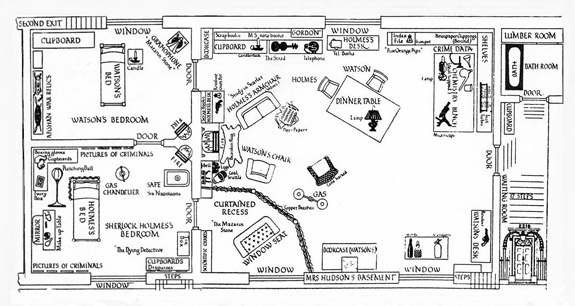Initial Scene Assessment…
The
initial scene assessment is a procedure put in place in order to make sure no
evidence is missed or manipulated in anyway. This assessment is carried out by
SOCO’s within this assessment sketches of the crime scene should be drawn along
with detailed notes of what they can visually see. Within these notes should be
descriptions of any evidence that is located within the crime scene. These
notes and sketches are often provided to the prosecution, defence and jury
allowing them to get a visual representation of what the initial scene looked
alike along with where key pieces of evidence where located. Within these
sketches a layout of the property or area should be drawn depending upon where
the scene occurred. This is a key procedure within any investigation as it
allows officers and investigators to try and understand the events prior to the
incident.
Along
with the extensive notes and sketches photographs of the scene should be taken.
Photographs should be taken before anyone enters the crime scene. The reasoning
behind this is evidence or objects within the scene could be moved when
examining or investigating the scene, therefor to get a realistic visualisation
of the scene initial photographs of the scene should be taken. Upon the collection
and analysation of evidence close up images should be taken, this is also done
to place the evidence within a certain part of the scene. It also allows the
jury, prosecution team and defence team to clearly see the evidence found
within the crime scene. This whole assessment is often used within evidence as
it is used within court in order for the jury, prosecution, defence and the
judge to get a clear visual representation of what the crime scene looked like.
Initial Scene Assessment
within the OJ Simpson case …
This
initial scene assessment was not carried out by the SOCO’s upon site however
taken by each individual lead detective within the investigation. This led to
many pieces of evidence missed out, confusing notes and sketches. Overall this
led to a bad visualization and representation of the scene within court. As the
officers did not share information that they had gathered the notes did not
make much sense. The SOCO’s were instructed by Riske to collect the evidence
very quickly rather than taking notes, photographs or sketches prior to the
evidence collection. This was because there was an extended delay of SOCO’s arriving
at the scene due to the call made by Riske very late on after the incident was
reported. Another factor as to why the SOCO’s where instructed to not note take
or photograph the scene was because there was a high presence of the media
within the crime scene, and Riske was more focused on clearing the scene and
closing it down rather than correctly and accurately collecting the evidence
and processing the scene.
The
photographs were taken by a crime scene photographer at 3.25am. However the original
call to report the incident was made at 12:13am. This meant that 3 hours and 12
minutes went by before Riske or any other lead detective called for a
photographer or the team of SOCO’s to attend. Photographs should have been
taken prior to the collection of evidence meaning the collection of evidence occurred
after 3:25am. This time phrase led to suspicion that evidence had been
manipulated or tampered with within the investigation. The detectives
instructed the photographer to only take generalised pictures of the scene and
to wait until the bodies had been removed by a coroner. This also led to a suspicion
of planting or manipulating evidence as no detailed photographs were taken of
the scene. Without the view of the whole crime scene the jury, prosecution,
defence or the judge did not get a clear visualisation of what the crime scene
looked like prior to the collection of evidence.
From the image above, there are clear footwear marks present within the blood. However due to the detectives instructions, the photographer did not take any of these images that could have been vital pieces of evidence. The image above is just one of the few images taken as a "general overview" from the crime scene photographer on site.


No comments:
Post a Comment